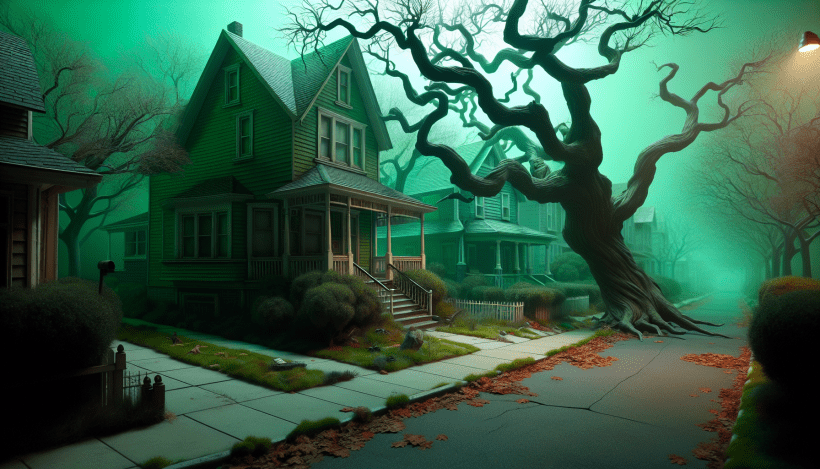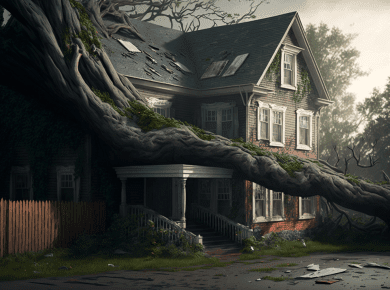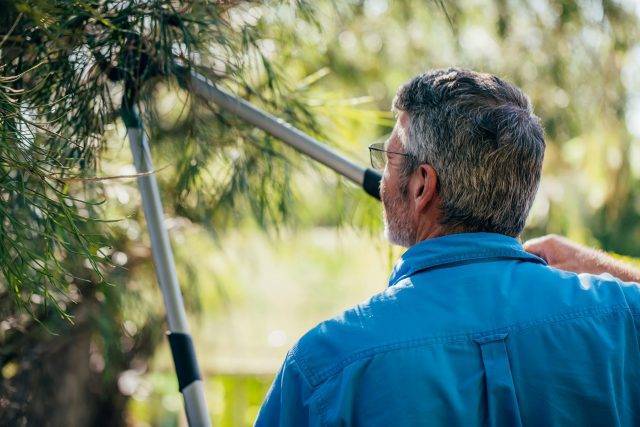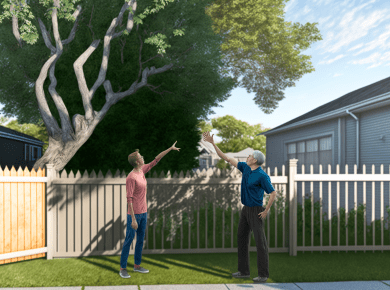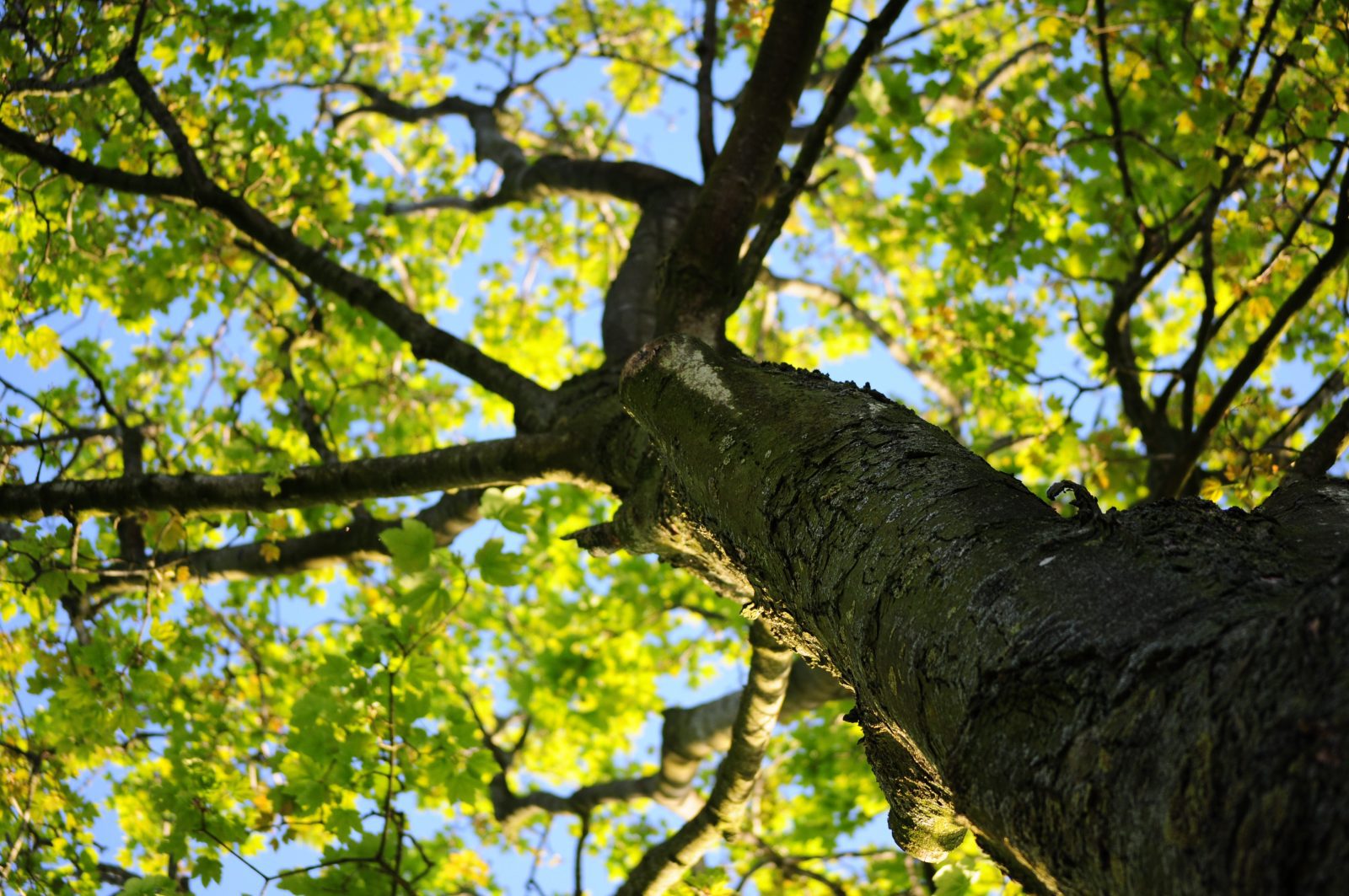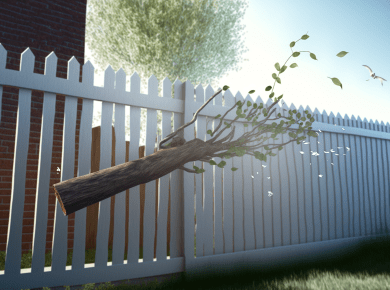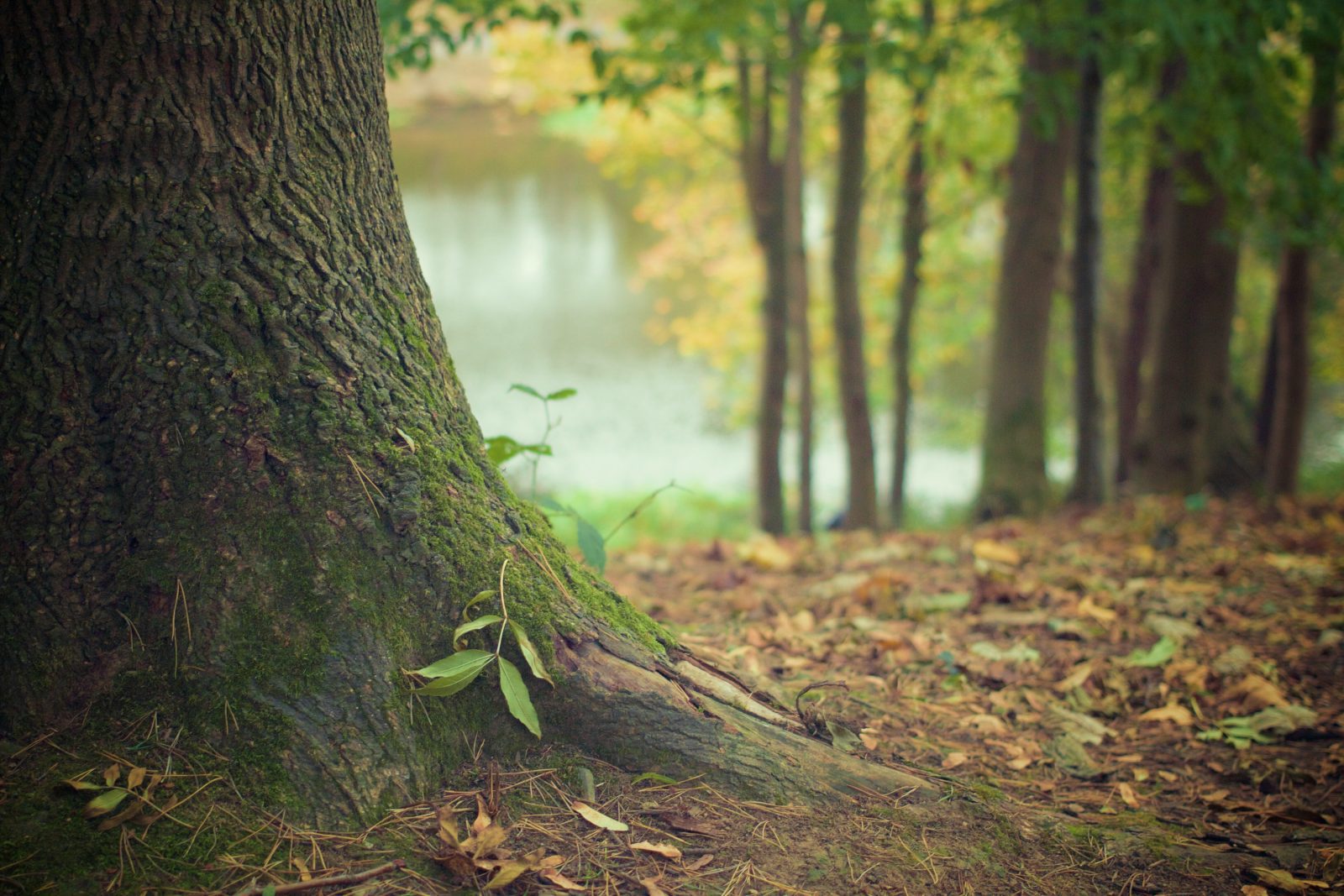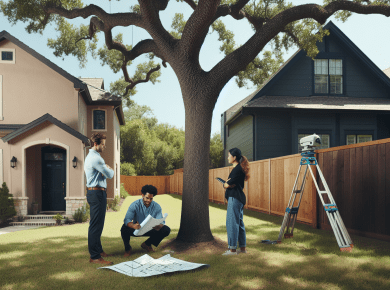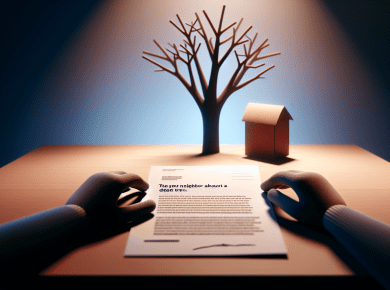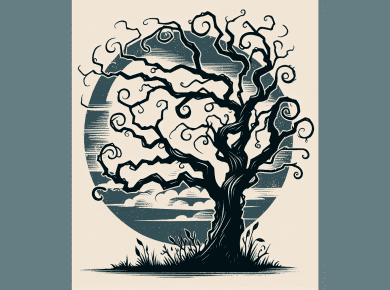Neighbor’s Tree Damage Issues
Legal Responsibility for Tree Damage
Understanding legal liability related to neighbor’s trees is crucial for homeowners. The responsibility for damage caused by a fallen tree often depends on the condition of the tree and the circumstances leading up to the incident.
In Florida, laws specify that if a dead tree falls onto a neighbor’s property causing damage, the owner of the tree is responsible for that damage. On the other hand, if a live tree falls, the responsibility typically lies with the neighboring landowner of the fallen tree (University of Florida IFAS Extension). It remains unclear under Florida law whether landowners must act to remove hazardous trees that pose a risk of damage to neighbors, particularly when considering trees that exhibit signs of poor health.
| Scenario | Responsibility |
|---|---|
| Dead tree falls on neighbor’s property | Tree owner is responsible |
| Live tree falls on neighbor’s property | Adjoining landowner is responsible |
In Massachusetts, the law shifts responsibility to the property owner where the tree fell, particularly if a healthy tree falls due to unavoidable circumstances, like a storm. Homeowners are generally responsible for repairs regardless of the tree’s original location, implying that damage responsibility does not shift based on tree health (Mass.gov).
| Scenario | Responsibility |
|---|---|
| Healthy tree falls during a storm | Damaged property owner is responsible |
As understanding of these laws continues to evolve, it is crucial for homeowners to seek clarity on their rights. They may find it beneficial to gather evidence if a neighbor’s failing tree causes damage to their property, especially as homeowner’s insurance often covers such incidents. To get more information on how to formalize your concerns, consider checking resources like a letter to neighbor about dead tree or a sample encroachment letter to neighbor.
If there are questions about what actions can be taken when a tree poses a threat, homeowners can review guidelines on what to do if a neighbor has a dangerous tree. For those who are unsure of their legal standing regarding tree management, knowing their options open regarding can you sue someone for cutting down trees on your property may provide further clarity.
Florida Laws on Tree Responsibility
Understanding the obligations and legalities surrounding tree damage in Florida is crucial for homeowners facing issues with neighboring trees. These laws clarify the responsibilities associated with damaged property, particularly in cases involving dead and live trees.
Dead vs. Live Tree Damages
In Florida, the legal responsibility for damage caused by a tree largely depends on whether the tree is dead or alive. Florida law states that if a dead tree falls onto a neighbor’s property and causes damage, the landowner of the property where the tree was originally located is responsible for the damages.
Conversely, if a live tree falls and damages a neighbor’s property, it is the responsibility of the adjoining landowner to cover the damages. This distinction can significantly impact claims, as the type of tree involved determines who may be legally liable for the damage incurred.
| Tree Type | Responsible Party for Damage |
|---|---|
| Dead Tree | Landowner of the property where the tree is located |
| Live Tree | Adjacent landowner of the tree causing damage |
For a deeper understanding of these responsibilities, refer to Florida boundary tree law.
Duty to Prevent Damage
While the specifics can vary, there is an emerging expectation under Florida law that property owners have a “duty of care” regarding the maintenance of trees on their property. This expectation is particularly relevant for trees that are dead or hazardous, which may pose a risk of falling.
Currently, Florida’s legal precedent may not fully establish the requirement for landowners to remove dead or hazardous trees to prevent potential damage to neighboring properties. However, future legal cases may clarify the responsibilities of landowners concerning live trees that demonstrate signs of risk, such as co-dominant leaders or girdling roots. This duty emphasizes the importance of vigilance in maintaining tree health and safety.
Landowners must be aware of their responsibilities to mitigate potential risks associated with their trees. For more information on handling situations with dangerous trees, see what can I do if my neighbor has a dangerous tree.
Understanding these aspects of Florida tree law helps homeowners make informed decisions, especially when dealing with neighboring properties where tree responsibility and damage may arise.
Understanding Compensation Types
In the unfortunate event that a neighbor’s tree falls on one’s property, understanding the types of compensation that may be available is crucial. This section outlines the three principal categories of damages that may be pursued: compensatory damages, special damages, and general damages.
Compensatory Damages
Compensatory damages are intended to replace the actual losses sustained by the victim. This type of damage encompasses various costs related to property damage, medical treatment, or any future expenses resulting from an injury caused by the negligence of another party. For example, if a neighbor’s dead tree falls and damages a fence or the structure of a house, the homeowner may seek compensatory damages to cover the cost of repairs and replacements. These damages can also include associated costs, such as medical expenses if someone is injured during the incident.
| Type of Loss | Example Costs |
|---|---|
| Property Damage | Repairs to fence or structure |
| Medical Treatment | Hospital bills for injuries |
| Future Expenses | Ongoing medical care if necessary |
Special Damages
Special damages represent the tangible financial losses that are straightforward to quantify. This includes specific expenses incurred as a direct result of the event. For instance, if someone has lost wages due to inability to work following an injury from the tree falling, this would be classified as special damages. Similarly, any out-of-pocket costs related to litigation or repairs can also fall under this category. The calculation of special damages focuses on concrete numbers and factual documentation.
| Type of Special Damage | Example Costs |
|---|---|
| Medical Expenses | Bills for doctor visits |
| Lost Wages | Income loss over time |
| Property Repairs | Costs for fixing damages |
For precise calculations, it is advisable to keep records of all related expenses, as these will serve as essential evidence during any legal proceedings.
General Damages
General damages differ from compensatory and special damages in that they account for more subjective aspects of recovery. They are not as clearly quantifiable and often relate to the emotional and psychological impact of the incident. Examples of general damages may include awards for pain and suffering, emotional distress, or diminished quality of life. These damages acknowledge that the effects of an incident, like the falling tree, can resonate deeply beyond mere financial loss and may require a longer healing process.
| Type of General Damage | Example Considerations |
|---|---|
| Emotional Distress | Anxiety or depression resulting from the incident |
| Pain and Suffering | Physical discomfort experienced post-injury |
| Long-term Care | Ongoing psychological counseling |
Understanding these damages helps individuals assess their options effectively. For further information on navigating the aftermath of property damage from a neighbor’s tree, refer to relevant articles such as who is responsible for cutting overhanging tree branches or letter to neighbor about dead tree.
Seeking Legal Assistance
In situations where a neighbor’s tree falls on a person’s property, legal recourse may be necessary. Understanding one’s rights and the importance of evidence can greatly influence the outcome of a case.
Rights to Seek Damages
When victims experience damage due to a neighbor’s negligence, they have the right to pursue damages. In New York, for instance, victims can seek compensatory and potentially punitive damages by consulting with a personal injury attorney (O’Dwyer & Bernstien, LLP). Compensatory damages are intended to cover actual losses, including property damage and any medical treatments resulting from the incident.
| Type of Damages | Description |
|---|---|
| Compensatory Damages | Covers actual losses, including medical expenses and property damage. |
| Special Damages | Tangible awards for calculable expenses, like lost wages and out-of-pocket costs. |
| General Damages | Based on the severity and impact of the injury, often for pain and suffering. |
As property owners assess the situation, they may consider special damages, which include concrete costs that can be easily quantified, such as repairs and medical expenses (O’Dwyer & Bernstien, LLP). In serious cases, general damages may also be sought, reflecting the long-term implications of the damage incurred.
Importance of Evidence
Gathering evidence promptly is vital for building a robust case. Documentation related to the incident should include photographs of the damage, written accounts detailing the circumstances, and any prior communications with the neighbor regarding tree maintenance. Establishing a clear line of negligence is often key in pursuing a claim.
The collection of evidence not only strengthens a case but also aids in demonstrating the extent of the damage incurred. Documentation can significantly influence court decisions and the amount awarded in damages (O’Dwyer & Bernstien, LLP). For effective communication with a neighbor regarding tree issues, consider using resources like a letter to neighbor about dead tree or an encroachment letter.
For those wondering, “can I sue my neighbor if his dead tree falls on my house?” seeking legal assistance is a crucial first step. Understanding rights and the importance of evidence can empower individuals to take necessary actions in these challenging situations.
Tree Laws in Massachusetts
Responsibility for Tree Falls
In Massachusetts, the legal implications surrounding fallen trees can be complex. If a neighbor’s healthy tree falls on a person’s property, the damaged property owner is responsible for repairs, regardless of the origin of the tree (Mass.gov). This means that if a healthy tree was struck by a storm and caused damage, the homeowner who experienced the damage must handle the repair expenses.
However, the situation changes if the tree was known to be diseased or at risk of falling prior to the incident. If the neighbor neglected to address this issue, there may be grounds for claiming negligence. In such cases, the neighbor could be held liable for any resulting damages.
| Tree Condition | Responsibility |
|---|---|
| Healthy tree falls during a storm | Property owner incurs repair costs |
| Diseased tree known to neighbor | Neighbor may be liable for damages |
Liability for Negligence
Liability for negligence in tree-related cases hinges on the neighbor’s awareness of the tree’s condition. If a tree was previously identified as diseased or unstable, and the neighbor failed to take appropriate measures (such as trimming or removal), they may face legal responsibility for damages caused to adjacent properties. Homeowners should also be aware that homeowner’s insurance typically covers damages due to fallen trees, and insurance companies play a significant role in determining fault in such incidents.
In Massachusetts, a property owner is not obligated to remove or trim their tree just because it obstructs sunlight to a neighbor’s property, provided the tree remains healthy. Nonetheless, neighbors retain the right to trim branches or roots that extend over property lines. For more information on property and tree disputes, refer to our article on who is responsible for cutting overhanging tree branches.
Understanding these laws can help individuals navigate the complexities of tree-related issues with their neighbors. Those affected by fallen trees should document the damage and consider seeking legal advice to explore potential compensation claims.
Ohio Tree Legalities
Landowner Responsibilities
In Ohio, landowners are generally not held liable for damages caused by a falling tree from their property unless they had prior knowledge that the tree posed a significant risk of falling. This includes scenarios where the tree is damaged, diseased, or dead. In such cases, the landowner might be responsible for the repercussions if the tree falls (Ohio Farm Bureau Federation).
It’s important for property owners to regularly inspect their trees for signs of disease or damage. Implementing preventative measures, such as pruning and maintaining trees, can help mitigate risk and liability. Additionally, trees are regarded as part of the property, meaning that the rights to these trees belong to the respective landowner, even if they are located near the property line. This emphasizes the need for clear communication with neighbors regarding tree maintenance and any potential risks.
Handling Tree Damage Issues
If a neighbor’s tree falls on a property and causes damage, the initial steps depend on the circumstances surrounding the fall. If it is established that the neighbor failed to maintain a hazardous tree on their property, the affected party may have grounds to seek compensation for damages. However, if the tree fell due to an act of God (for example, a severe storm) and the neighbor was not aware of the tree’s condition, then liability could be more complicated.
When disputes arise, especially involving shared fences, it is advisable for adjoining landowners to negotiate the costs of repairs privately. If no agreement can be reached, they might consider filing a complaint with the township trustees or taking legal action to resolve the issue (Ohio Farm Bureau Federation).
In cases where a tree is deliberately damaged by someone without permission, this act is considered reckless and can result in being charged with a fourth-degree misdemeanor. The perpetrator could face fines, possible jail time, and be liable for triple damages equal to the value of the harmed tree (Ohio Farm Bureau Federation).
For property owners dealing with encroachments or trees that might pose risks, it is wise to consult resources like who is responsible for cutting overhanging tree branches or, if necessary, seek a legal consultation regarding the situation. Understanding these laws is crucial for protecting one’s rights and property when dealing with neighbor tree issues.
